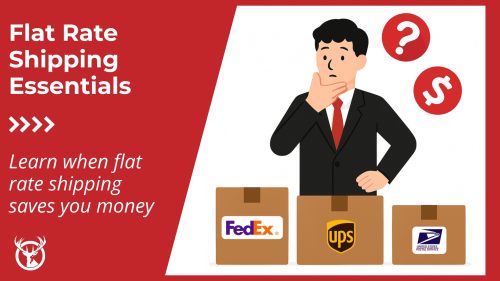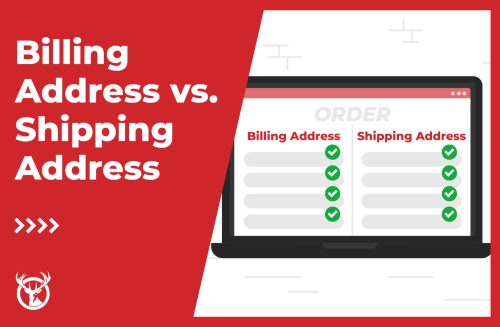The extra cost and hassle of Certified Mail aren’t worth it for most ecommerce packages or letters. No signature required is a popular delivery option because it lets people get letters and packages when no one is home to receive them.
However, if you need proof that your package or letter was delivered to the recipient, you can’t do better than sending it by USPS Certified Mail®.
This article will tell you everything you need to know about USPS Certified Mail, including what it is, how to use it, the costs, and much more.
What is USPS Certified Mail?

Certified Mail is a service offered by the United States Postal Service. A certified item needs a delivery signature; it can’t be left in a mailbox or on a doorstep. Certified Mail is only available on first-class mail.
USPS lets you get a signature from the person who received the mail, such as a receptionist. Or you can specify that the addressee must sign for the package or letter. That way, you know the article was delivered to the right person.
You can check the delivery status of a piece of USPS Certified Mail® online or by telephone. If you send a lot of Certified Mail, you can get delivery confirmations through a bulk file transfer as well.

NOTE: An add-on service with USPS Certified Mail® is a return receipt. You can have a receipt mailed to you or sent by email. This service is important for items such as legal paperwork where you might need to prove that it was delivered on a certain date. This service is different from a certificate of mailing.
Which carriers have certified delivery options?
USPS is the only place to get an official certified mail service. However, both FedEx and UPS offer similar signature requirements and delivery confirmations.
You can specify signature requirements for FedEx envelopes and packages. You can retrieve proof of delivery, including a scan of the signature, on your tracking page.
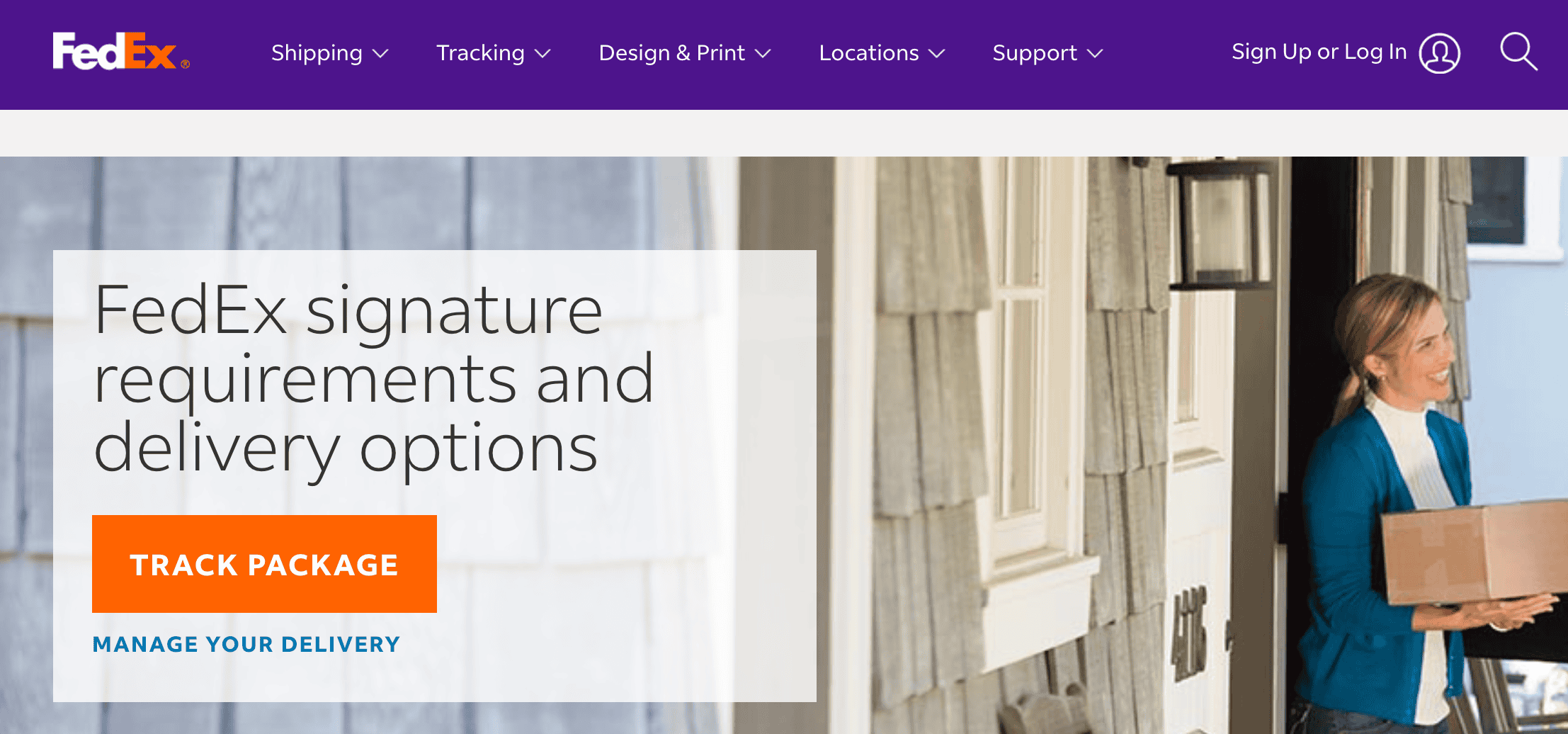
UPS delivery confirmation services—known as UPS Complete View Confirm—will provide you with a delivery receipt. This is closer to certified mail. However, if you need delivery confirmation for legal reasons, your best option is still USPS. Some courts and government agencies will not accept anything but Certified Mail as proof of delivery.

How much does USPS Certified Mail® cost?
Here are the USPS Certified Mail rates for a variety of different package types, based on the latest pricing changes on July 14, 2024.
| Service | Rates |
|---|---|
| Certified Mail Fee | $4.85 |
| Return Receipt Green Card | $4.10 |
| Return Receipt Electronic (PDF replaces Green Card) | $2.62 |
| Restricted Delivery (for Certified Mail) | $7.90 |
| First Class Letter Postage (1 oz) | $0.69 |
| First Class Letter Postage (Additional ounces) | $0.28 |
| Flats (1 oz) | $1.50 |
| Flats (2 oz) | $1.77 |
| Flats (3 oz) | $2.04 |
| Flats (4 oz) | $2.31 |
| Flats (5 oz) | $2.59 |
| Flats (6 oz) | $2.87 |
| Flats (7 oz) | $3.15 |
| Flats (8 oz) | $3.43 |
| Flats (9 oz) | $3.71 |
| Flats (10 oz) | $4.01 |
| Flats (11 oz) | $4.31 |
| Flats (12 oz) | $4.61 |
| Flats (13 oz) | $4.91 |
| Priority Mail Flat Rate Envelope | $8.50 |
| Priority Mail Legal Flat Rate Envelope | $8.80 |
| Priority Mail Padded Flat Rate Envelope | $9.30 |
| Priority Mail Small Flat Rate Box | $9.05 |
| Priority Mail Medium Flat Rate Box | $16.00 |
| Priority Mail Large Flat Rate Box | $21.85 |
How to send Certified Mail
You need to go to a post office in person to send USPS Certified Mail®. At a post office or other mailing center, you can pick up copies of Form 3800 and attach them to your certified parcels yourself. You may also be able to print out certified mail labels online.
However, if you need proof of mailing, you’ll need to present it at the counter. A postal worker will stamp your mailing receipt to verify the date you mailed it.
Here’s an example of a certified mail receipt:
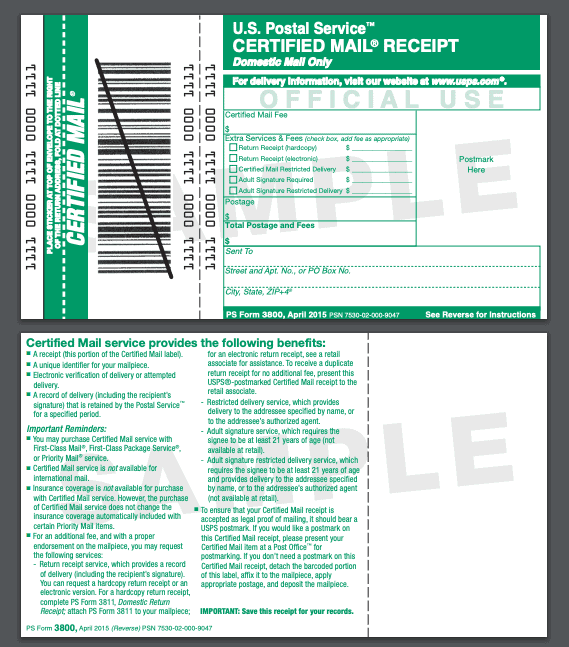
Certified Mail FAQ
Before you visit the post office, you might have additional questions about Certified Mail. These questions can be specific, and we’re here to help! Here are some additional questions and their answers below:

Can you send Certified Mail to a PO Box?
Yes, you can mail Certified Mail to a PO Box, and it’s simple. All you need to do is address your mail with the PO Box address.










How long does certified mail take?
Certified Mail normally takes 2-5 business days. However, it can be delivered sooner if you select Priority Mail.










What is registered mail?
Registered Mail is the most secure option for mailing. Why? Each time the package is handed off to a new person, the package is signed and the customer is notified. This option is available for customers sending valuable or irreplaceable items through the mail.










What’s the difference between Registered Mail and Certified Mail?
While Certified Mail provides proof of shipment and delivery, Registered Mail provides updates throughout the entire shipment process. By receiving updates after each USPS employee passes off your package, you can relax thanks to the additional security.










How do you track Certified Mail?
Tracking your Certified Mail is exactly the same as tracking regular packages. When sending out your certified mail, you will receive a tracking number that is attached to your delivery.
Once available, you simply visit USPS Tracking and enter your tracking number. From there, you can monitor your package’s journey from post office to post office.










What happens if the recipient doesn’t sign for a certified package?
The delivery person can’t leave Certified Mail without a signature. If no one is home to receive it, the postal worker will leave a note that a delivery attempt was made.
USPS only makes one delivery attempt. After that, the carrier returns the letter or package to the nearest post office. You can sign the receipt and have someone else pick up the item for you unless it was sent with restricted delivery.
In that case, the person to whom the Certified Mail is addressed must go to the post office and show ID to pick it up. The post office will hold undelivered USPS certified mail for 15 days before returning it to the sender.










How do you send a certified letter?
To send a certified letter through USPS Certified Mail®, you must visit a post office in person. Once there, you can obtain copies of Form 3800 and attach them to your certified parcels by yourself.
You may also have the option of printing certified mail labels online. However, if you require evidence of mailing, you must bring your parcel to the counter for verification. A postal worker will stamp your mailing receipt to confirm the date on which it was sent.










How long does certified mail take?
Certified Mail normally takes 2-5 business days, but it may be delivered faster by using Priority Mail.










Can certified mail be delivered without a signature?
The delivery person cannot deliver Certified Mail without a signature. If no one is home to receive the Certified Mail, then the postal worker will leave a note that a delivery attempt was made.
Choosing the right USPS services
If you need help deciding which USPS services are right for your ecommerce business, a 3PL services company can help.
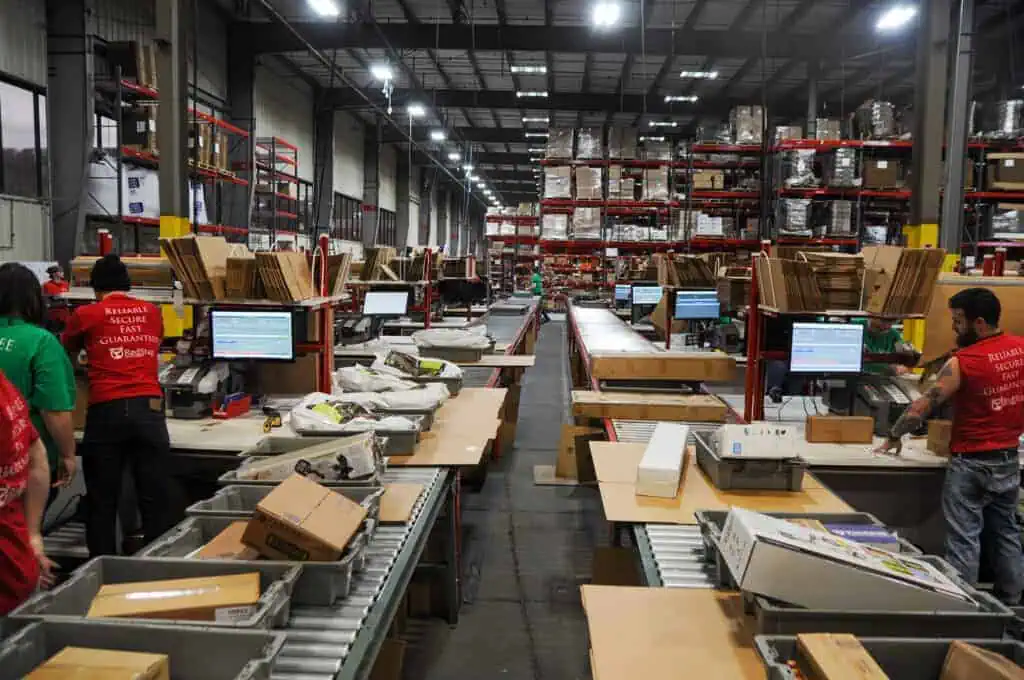
At Red Stag Fulfillment, part of our services is helping clients understand the best ecommerce shipping options for their order fulfillment.
Want our help in streamlining your ecommerce logistics? Start a conversation today.






